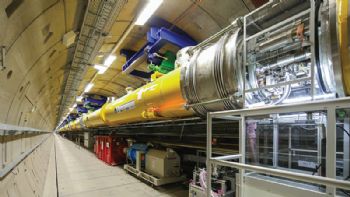
The European XFEL (
www.xfel.eu), which officially opened at the beginning of the month in Hamburg, is the world’s largest X-ray laser facility; it runs underground for 3.4km and is the result of collaboration between 11 countries.
Neil Pratt from the UK’s Science and Technology Facilities Council (STFC), which helped to design and build a cutting-edge X-ray camera that can capture images of ultra-fast processes such as chemical reactions within the XFEL, said: “The special thing about the European XFEL is the new science that it enables.
Research groups from all over the world will now be able to map the atomic details of viruses, dive into the molecular composition of cells, and create three-dimensional images of tiny nano-particles.”
John Collier, the director of STFC’s Central Laser Facility at the Rutherford Appleton Laboratory in Oxfordshire, said that building such a powerful tool meant pushing the boundaries of engineering.
“The lasers we have had to date have generally run in the optical, ultra-violet or infra-red part of the spectrum. Getting something to work in the X-ray region has needed a completely different approach.
“Instead of exciting a ‘gain medium’, the XFEL works more like a particle accelerator. You take an electron beam and accelerate it to high energy, which requires a few hundred metres.
“You then put it through a series of devices called undulators, which cause the electron beam to oscillate and give off X-rays. These act on the beam and turn it — after hundreds more metres of tunnel — into a laser-like beam.”
In order to take advantage of the XFEL’s 27,000 pulses per second, a detector that could record a high-quality image and then clear it very quickly (ready for the next one) had to be built.
A number of European laboratories were involved, and the technology that has been developed could eventually trickle down to consumer electronic devices such as cameras.